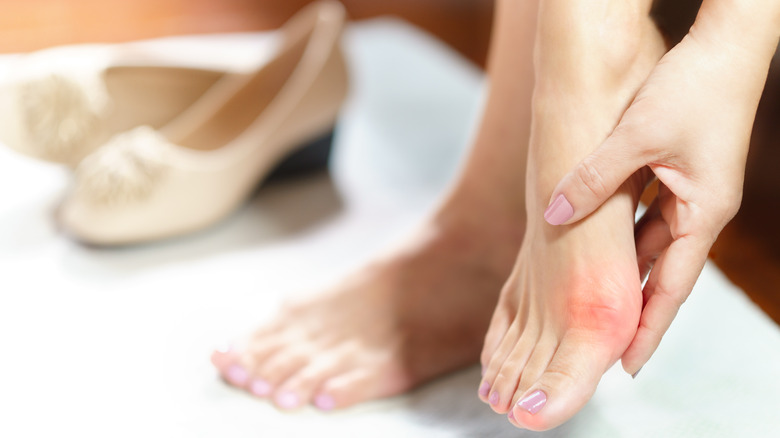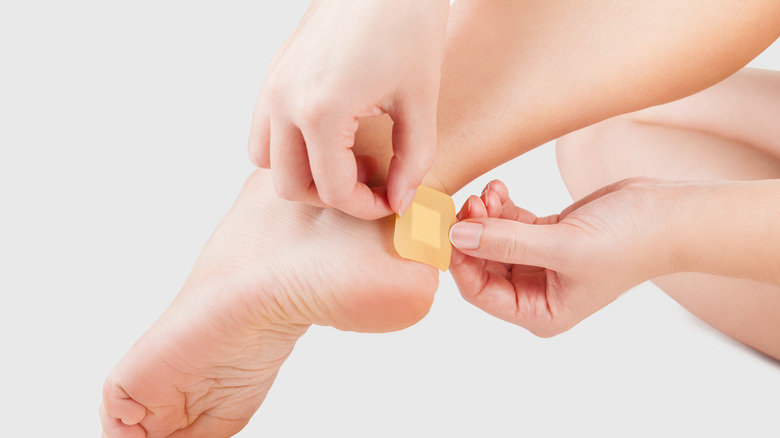The First Thing You Should Do When You Get A Blister
A blister is a painful condition in which fluid forms between the layers of the skin (via Cleveland Clinic). Blisters develop under the epidermis, or outermost layer of your skin, as a fluid-filled sac, which can be filled with either blood or clear fluid. While there are many types of blisters, the most common ones are caused by friction, injury, and heat. According to Cleveland Clinic, friction blisters are often a result of not wearing socks or wearing ill-fitting shoes, while heat blisters are caused by burns and sunburns.
Blood blisters, on the other hand, are caused by injuries in which something pinches the skin so hard it damages a blood vessel and causes blood to leak into the lower layers of the skin. Generally speaking, blisters can either be painful or itchy and usually develop on the hands and feet, although they can form anywhere on the body. If left untreated, blisters can get infected and fill up with white-colored pus.
How to treat blisters
That's why it's important to treat them right away. If your blister hasn't popped, you should gently clean the area with mild soap, keep it intact, and loosely cover it with a bandage, per the Cleveland Clinic. It's also important not to put too much pressure on it because you don't want it to pop prematurely. According to WebMD, you can put a donut-shaped moleskin pad around your blister to try to avoid putting too much weight on it. If your blister has popped, however, you should disinfect it with soap and warm water, apply antibiotic ointment to the area, and cover it with a bandage.
In the event that your blister is incredibly large or painful, you may need to pop it or drain its fluid, per WebMD. To do this, wash your hands and blister and use a sterile needle to puncture a small hole near the blister's edge, gently squeezing out the fluid. Once that's done, you can wash the area again and pat it dry, leaving the skin of the blister intact. Afterward, you can apply antibiotic ointment to the blister and loosely cover it with gauze.


